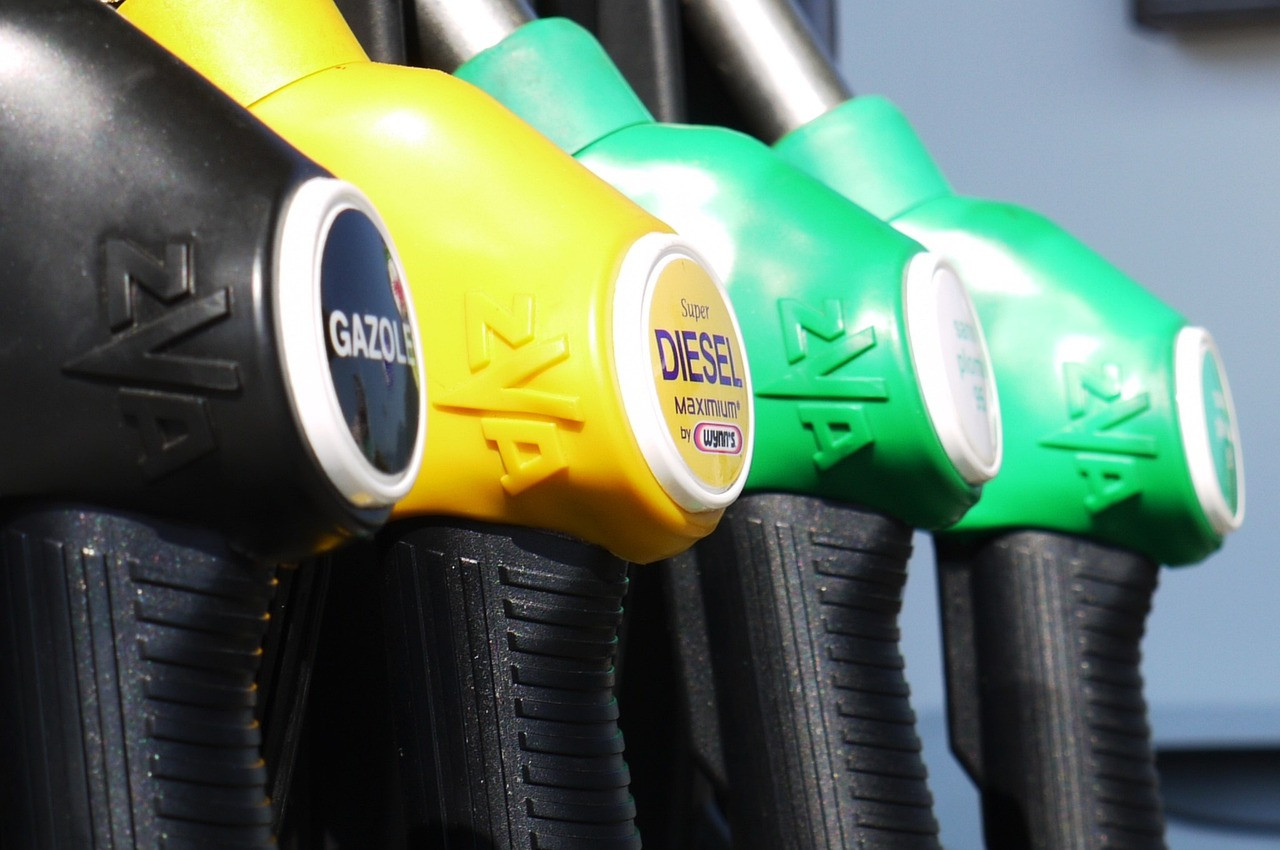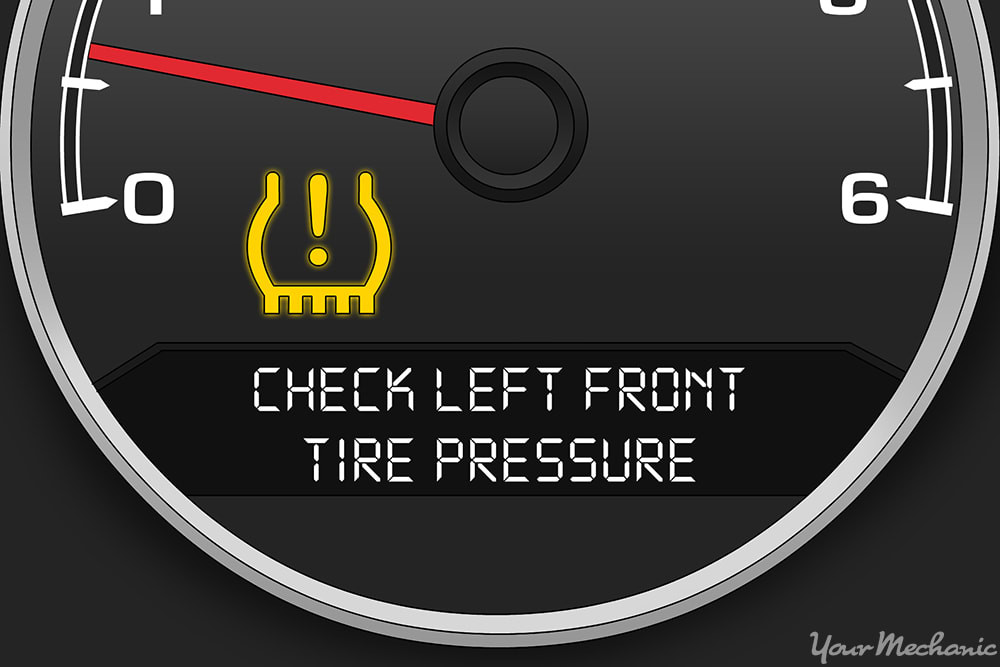In today’s economy, the cost of fuel has become an increasingly significant portion of household budgets. The Department of Energy reports that fuel costs for the average American family amount to almost nearly $2,000 on gas annually. Thus, the ability to drive understanding the importance of fuel economy is crucial to manage these escalating expenses effectively and maintain the longevity of the vehicle. Fuel consumption has a big impact on the planet and our own wallets.

Recently I purchased a second hand car… a Subaru B9 Tribeca. Tribeca’s while being a comfortable car with a flat 6, 3 litre engine were not known for fuel economy. When I did the research the numbers were 17/21 mpg. This indicates I could expect 17mpg around town and 21mpg on longer trips. However I live in the mountains and so I was not excited about my future fuel bills. I did also believe that with my driving skill I would be able to change those numbers. And boy, did I ever. Even driving over mountain passes (4000′) I achieved 25mpg on my first 200kms round trip. Now around town I am still maintaining number higher than 24mpg. So in fact, I have achieved a 19% increase in fuel economy just by watching driving habits. Read on to find how you could save 19% or more on your fuel bills.
Implementing fuel-efficient driving techniques can lead to substantial savings and reduce the wear and tear on vehicles through focussing on optimal fuel economy. In fact, The American Automobile Association estimates that drivers can improve their gas mileage by up to 30% by driving more economically. This article will provide practical advice on how to achieve this, including strategies such as maintaining optimal tire pressure, performing regular vehicle maintenance, and adopting smoother driving habits, all of which contribute to fuel efficiency and car longevity.
Understand Your Vehicle’s fuel economy
Understanding a vehicle requires comprehensive knowledge of its fuel efficiency. Grasping the vehicle’s features and identifying parts requiring routine maintenance are essential. The car’s fuel efficiency plays a crucial role in determining its performance. A thorough understanding of tires and their impact on driving, coupled with fuel efficiency tips, can aid in vehicle maintenance and cost-saving measures. Regular tire checks can prevent unnecessary fuel consumption. Knowing your car is not just about driving; it includes understanding its features, maintenance needs, and fuel efficiency.
Know Your Car’s Fuel Economy
Following the exploration of basic vehicle mechanics, the focus now shifts to a crucial aspect – fuel economy. Possessing knowledge about a car’s fuel efficiency is not only beneficial for the environment but also for one’s wallet. The fuel efficiency of a vehicle refers to the distance it can travel per unit of fuel consumed. This parameter is often measured in miles per gallon (mpg) or litres per hundred kilometres (l/100km). It’s important to note that a car’s fuel efficiency can vary significantly depending on driving habits and conditions. For instance, frequent stop-and-go city driving typically results in lower fuel efficiency compared to steady highway driving. Consequently, understanding a vehicle’s fuel efficiency contributes to more economical and environmentally friendly driving practices.

Understand the Features of Your Vehicle
Segueing into the next avenue of discussion, Understanding the Features of Your Vehicle is paramount for optimal use and safety. Vehicles today come equipped with a myriad of features, many of which may not be immediately apparent or understood. From adaptive cruise control to lane departure warnings, and automatic braking systems, these features are designed to enhance safety and convenience. Knowledge about these features can also aid in troubleshooting or identifying potential issues. For instance, awareness about the tire pressure monitoring system can prevent tire-related accidents. In essence, comprehending these features equips the user with the necessary information to utilize the vehicle to its maximum potential and maintain it effectively.
Identify Parts that Need Regular Maintenance
Continuing our journey into vehicle comprehension, the focus shifts to the identification of parts that require regular maintenance. Regular maintenance is crucial for prolonging the lifespan of a vehicle and ensuring good fuel economy. Key components requiring attention include the engine oil and filter, which need replacement every 3,000 to 7,000 miles, depending on the manufacturer’s recommendation. Brake pads should be checked annually and replaced as needed. The timing belt has a replacement interval typically between 60,000 and 100,000 miles. Tires also need regular rotation, balancing, and alignment to ensure efficient driving. Regular maintenance checks and early detection of potential issues can significantly prolong a vehicle’s lifespan, enhance safety, and reduce repair costs.

Plan Your Route
In planning a route, the use of maps or GPS can assist in avoiding congested areas. Moreover, choosing the most fuel-efficient route contributes to cost-effectiveness and reduces your fuel costs. Additionally, preparing for heavy traffic situations in advance can reduce commute time. Proper timing of trips can further enhance efficiency by avoiding peak hours. Thus, the benefits of pre-planning are significant, including reduced stress, better fuel economy, and increased time efficiency.
Use a Map or Gps to Avoid Traffic
Now that an understanding of the vehicle’s features has been established, it’s time to dive into the next crucial step – planning your route. Using a map or GPS to navigate can prove instrumental in avoiding traffic. Recent studies reveal that utilizing GPS can reduce travel time by 12% on average. It can also assist in identifying alternate routes, thereby decreasing the risk of getting stuck in traffic. Furthermore, real-time traffic updates provided by certain GPS systems enable adjustments to the route in response to changing road conditions. This technological tool not only saves time but also enhances the overall driving experience by minimizing stress and frustration associated with traffic congestion.
Choose the Most Fuel-Efficient Route
Having grasped the knowledge of your vehicle, the next step involves route planning to reduce your fuel consumption. Choosing the most fuel-efficient route is an integral part of this process. Fuel economy is changed by a variety of geographic and traffic related factors. Contrary to popular belief, the shortest route is not always the most fuel-efficient. Factors such as traffic congestion, road conditions, and highway vs. city driving can impact fuel efficiency. For instance, a study by the American Automobile Association found that stop-and-go city traffic can decrease fuel efficiency by up to 33% compared to highway driving. Therefore, consideration should be given to routes that minimize stop-and-go situations and maximize steady-speed, highway driving. This not only saves fuel but also extends the vehicle’s life by reducing wear and tear.
Plan Ahead for Heavy Traffic Situations
Shifting gears from the previous discussion on understanding your vehicle, let’s delve into the art of route planning. Specifically, planning ahead for heavy traffic situations is a crucial aspect of efficient route planning.

Being stuck in traffic not only wastes time but also burns unnecessary fuel. According to the Texas A&M Transportation Institute, the average American commuter spends an estimated 54 hours a year in traffic, wasting approximately 21 gallons of fuel. To avoid this, it is advisable to monitor traffic patterns regularly and identify peak hours. Utilize real-time traffic reports from apps and websites to help anticipate and avoid heavy traffic. This proactive approach can significantly improve commuting efficiency and reduce the environmental footprint.
Monitor Your Speed
Maintaining a steady speed is crucial to monitor one’s speed, as it reduces fuel consumption and improves vehicle efficiency. Avoiding unnecessary acceleration and braking is also beneficial, with excessive engine revving leading to increased fuel usage. Utilizing cruise control when feasible can ensure a consistent speed, reducing energy waste. Conversely, fast acceleration can negatively impact fuel economy, increasing both energy consumption and environmental impact. Furthermore, speed influences aerodynamic drag, with higher speeds leading to greater resistance and fuel consumption. Thus, understanding these factors can significantly aid in effective speed monitoring.
Maintain a Steady Speed
A sense of calm can result from knowing what lies ahead, just as it does when following a well-planned route. Aggressive changes in speed have a direct correlation to fuel economy. Now, consider the tranquility that can be achieved by maintaining a steady speed while driving. Consistency is key when it comes to efficient fuel usage. Research indicates that a vehicle’s fuel economy drastically decreases once it exceeds speeds of 50mph. The science behind this reveals that both the engine’s operation and the aerodynamic drag reach optimal levels at this speed. Not only does keeping a steady, moderate speed save fuel, it also reduces wear and tear on the vehicle. Remember, maintaining a steady speed is an essential part of efficient driving.
Avoid Acceleration and Braking
Transitioning from route planning, imagine the steady rhythm of a car moving at a consistent speed. Avoidance of acceleration and braking becomes a crucial aspect of maintaining this rhythm. In fact, research conducted by the Department of Energy (DOE) suggests that aggressive driving, such as rapid acceleration and braking, can lower gas mileage by up to 40%. Constant changes in speed not only increase fuel consumption but also cause unnecessary wear and tear on the vehicle. Therefore, it is wise to anticipate traffic conditions and adapt the speed gradually, thereby mitigating abrupt changes. This approach ensures smooth driving and reduces the risk of mechanical issues.
Use Cruise Control when Possible
Drawing a natural transition from the planning phase, it’s time to address the execution: tackling the journey itself. How can travel be made more efficient? One possible solution is the application of cruise control. This feature, available in most modern vehicles, maintains a steady speed without driver intervention. Not only does this provide a more relaxed driving experience, it also supports optimal fuel consumption. Research indicates that using cruise control could reduce fuel consumption by up to 14%. Thus, whenever feasible, the utilization of cruise control is highly recommended to enhance fuel efficiency and overall vehicle performance. Remember, effective speed management is not just about the speed itself, but also the consistency of maintaining it.
Use the Right Fuel
The proper selection of fuel grade, as advised in the owner’s manual, plays a critical role in maintaining engine performance and fuel economy. Avoidance of overfilling the fuel tank is crucial to prevent damage. Further, understanding the impact of fuel on engine performance is essential. Lastly, implementation of fuel economy tips can greatly contribute to efficient fuel usage.
Choose the Right Grade of Fuel
Just as maintaining a steady speed bolsters fuel economy so does using the right fuel. Moving on to the topic of Choosing the Right Grade of Fuel, it becomes pivotal to identify the best fit for the vehicle.
According to the American Automobile Association, using a higher octane fuel than recommended can result in a waste of nearly $2.1 billion annually. The correct grade of fuel optimizes the performance of the engine and maximizes fuel economy. Moreover, it reduces the risk of engine knocking, a condition that could lead to serious engine damage. It thus becomes imperative to adhere to the guidelines provided by the manufacturer in selecting the correct fuel grade.
Check Your Owner’s Manual for Recommendations
Just as driving at a consistent speed contributes to fuel economy, so does using the right fuel. Now, you might be wondering, “Which fuel is right for my car?” The answer lies in the owner’s manual.
The owner’s manual provides specific recommendations for fuel grade and type. It is not uncommon for vehicle owners to overlook this information, leading to potential vehicle inefficiency and damage. A study by the American Automobile Association showed that U.S. drivers wasted more than $2 billion in 2015 by using premium-grade gasoline in vehicles designed to run on regular fuel.
In conclusion, the impact of using the recommended fuel type can significantly affect vehicle performance and longevity.
Avoid Overfilling the Fuel Tank
Just as monitoring speed is crucial, so is the need to be meticulous about fueling your car. Focusing on the aspect of Avoid Overfilling the Fuel Tank, it is vital to understand that overfilling can cause fuel to enter the vehicle’s vapor recovery system. This can lead to poor performance and potential damage. In fact, it is reported by the Car Care Council that overfilling can lead to costly repairs. To avoid this, stop fueling once the automatic nozzle clicks off. Continuously topping off can overflow the fuel tank, causing detrimental impact. Hence, it is strongly recommended to refrain from overfilling the fuel tank to maintain optimum vehicle performance.
Reduce Drag
In reducing drag, keeping windows closed mitigates wind resistance, whereas removal of excess weight and objects enhances vehicular mobility. Further, proper tire inflation ensures optimal road contact, reducing friction and subsequent drag. The relationship between drag and engine efficiency divulges that lower drag translates to less strain on the engine, promoting efficiency. Lastly, regular car servicing is fundamental to maintaining aerodynamic design, which significantly contributes to drag reduction.
Keep Windows Closed
Imagine the gust of wind blowing through the car windows on a sunny day. It may seem like a harmless pleasure, but in fact, it is a significant contributor to fuel inefficiency. This is because when the windows are open, it increases the drag on the vehicle, forcing the engine to work harder and consume more fuel. According to a study by the Society of Automotive Engineers, keeping the windows closed can improve fuel economy by up to 10%. Remember, it is crucial to keep windows closed during high-speed drives to optimize fuel efficiency. This seemingly minor action is a step towards reducing drag and achieving an optimal driving experience.
Remove Excess Weight and Objects
Just as a healthy diet fuels the human body efficiently, appropriate fuel powers a vehicle for optimal performance. Now, imagine lugging around a heavy backpack all day. It’s exhausting, right? In a similar vein, excess weight burdens a vehicle’s engine and increases drag.
Studies indicate that for every 100 pounds of unnecessary weight, fuel economy decreases by 1-2%. This, in effect, increases the car’s drag, consequently causing the engine to work harder. It is, therefore, imperative to remove excess weight and objects from the vehicle. By doing so, it optimizes engine performance, reduces drag, and ultimately, improves fuel economy. The removal of extraneous objects, particularly from the roof, is also beneficial in reducing aerodynamic drag.
Make Sure Tires Are Properly Inflated
Moving right along, it is essential to discuss the importance of proper tire inflation. Under-inflated tires can significantly contribute to increased drag, thus affecting the overall engine efficiency. Research conducted by the U.S Department of Energy reveals that tires under-inflated by just 10 PSI can lead to a 1% decrease in fuel economy. Notably, this small percentage can accumulate over time, leading to substantial fuel wastage. Additionally, under-inflated tires can lead to premature tire wear and potentially hazardous driving conditions. Therefore, regular tire pressure checks are fundamental in maintaining optimal vehicle performance and reducing drag. Consequently, proper tire inflation emerges as a crucial yet often overlooked aspect of efficient driving.
Monitor Your Tire Pressure
Regular tire pressure checks ensure proper inflation, thereby optimizing vehicle performance and safety. Improper tire inflation, particularly under-inflation, poses serious risks such as decreased fuel efficiency, poor handling, and potential tire failure. Statistics reveal that approximately 33% of vehicles on the road have at least one under-inflated tire. Regular pressure checks and adequate inflation can significantly prolong tire life, reducing the need for premature replacements. For example, every 10% of under-inflation reduces tire life by 11%. Hence, consistent tire pressure monitoring plays a crucial role in maintaining vehicle safety and performance.

Check Tire Pressure Regularly
Believe it or not, the tire pressure can also significantly impact the vehicle’s fuel efficiency. Regularly checking the tire pressure is a fundamental practice in vehicle maintenance. A study by the National Highway Traffic Safety Administration revealed that around 33% of all vehicles on the road have at least one tire that is under-inflated. It is advised that tire pressure checks be conducted at least once a month for optimal performance. Under-inflation causes tires to have a larger contact area with the road, leading to increased rolling resistance, which results in higher fuel consumption. Therefore, regular tire pressure checks can not only prolong the tire’s lifespan but also promote fuel efficiency.
Make Sure Tires Are Properly Inflated
Let’s not forget about the tires, shall we? Having just discussed drag reduction, the importance of proper tire inflation becomes evident. When tires are correctly inflated, rolling resistance, a significant factor contributing to fuel consumption, is reduced. Statistics from the Department of Energy reveal that for every 1% of under-inflation, a vehicle’s fuel efficiency can drop by 0.2%. Furthermore, research studies show that about 50% of the tires on the road are under-inflated, highlighting the need to emphasize correct tire inflation. It’s not just about fuel efficiency; safety and tire longevity are also at stake when tires aren’t properly inflated.
Replace Worn Tires
Imagine this: a well-maintained car with minimal drag and now, let’s move on to another crucial factor, the tires.
When it comes to maintaining optimal fuel efficiency, tire replacement is a vital aspect that is often overlooked. Research by the National Highway Traffic Safety Administration found that vehicles with worn tires have reduced traction and are 3 times more likely to be involved in an accident. Furthermore, worn tires can decrease fuel economy by up to 2%. Hence, it is recommended to replace tires as soon as their tread depth reaches 2/32 of an inch to ensure safety and maximize fuel efficiency. Regular tire inspection should be considered as a key component in prolonging the life of the tires and enhancing the vehicle’s overall performance.
Reduce Idling Time
To reduce idling time, turning off the engine when stationary is crucial. Excessive idling not only wastes fuel but also contributes to environmental degradation. Caution must be exercised while stopped at intersections, as inopportune engine shutdowns can cause traffic disruptions. The environmental impact of idling is significant, with unnecessary emissions adding to air pollution. Finally, adopting fuel-saving strategies such as reducing idling time can make a substantial difference in both economic and environmental terms.
Turn Off the Engine when Stopped
Shifting focus from tire pressure, let’s dive into another impactful strategy to save fuel. Undeniably, turning off the engine when stopped offers significant benefits, including fuel economy. Studies have revealed that even a brief idling period of ten seconds consumes more fuel than restarting the engine. Furthermore, eliminating unnecessary idling can result in substantial fuel savings. It is worth noting, though, that turning off the engine should be practiced responsibly and safely, not in situations where it might lead to safety issues. Adherence to this practice not only contributes to fuel efficiency, but also reduces the environmental impact associated with excessive idling. Simply put, turning off the engine when stopped is a practical step towards fuel conservation.
Avoid Excessive Idling
Shifting gears from the importance of tire pressure, let’s address another crucial factor affecting both fuel economy and environmental footprint: idling. Excessive idling is not just an unnecessary fuel guzzler, but also a major contributor to air pollution. According to the U.S. Department of Energy, an idling vehicle can consume as much as a gallon of fuel per hour, costing drivers unnecessarily. Furthermore, the Office of Energy Efficiency and Renewable Energy reports that unnecessary idling annually results in an estimated 6 billion gallons of wasted fuel. Therefore, it is strongly advised to avoid excessive idling. By turning off the engine when stopped for more than a minute, substantial fuel savings can be achieved, and harmful emissions significantly reduced.
Use Caution when Stopped at Intersections
Bridging from the importance of tire pressure, let’s take a moment to consider the safety aspects of idling, particularly at intersections. A study conducted by the Transportation Research Board found that over 1.2 million accidents occur at intersections each year in the United States. This statistic underscores the critical importance of maintaining vigilance while stopped. Intentional awareness can help prevent accidents caused by sudden starts or abrupt braking. Furthermore, when idling, it is prudent to keep a safe distance from the vehicle in front. This allows for enough reaction time should the vehicle ahead suddenly move. In summary, reducing idling time not only saves fuel but also contributes to road safety.
Tune up Your Vehicle
The importance of regular vehicle maintenance cannot be overstated. Change Oil Regularly is a crucial routine task that provides lubrication, cools the engine and reduces wear and improves fuel economy. A Check of Your Air Filter ensures optimal fuel combustion and engine performance. Regular Inspection of Spark Plugs and Belts prevents sudden breakdowns and costly repairs. A Regular Battery Checkup guarantees reliable vehicle start and smooth electrical operations. Lastly, Understanding Ignition Systems can aid in identifying potential issues early. Indeed, these tune-up procedures significantly enhance vehicle longevity and performance.
Change Oil Regularly
Feeling the thrill of a smoothly running vehicle, let’s turn our attention to the crucial aspect of changing oil regularly. With this in mind, regular oil changes prove vital in maintaining vehicle efficiency, as they lubricate the engine and reduce overall wear and tear.
According to the American Automobile Association (AAA), an oil change is recommended every 5,000 to 7,500 miles, or at least twice a year, to prevent sludge buildup.
Undeniably, consistent oil changes contribute to better fuel economy, improved engine performance, and extended engine life. This simple maintenance task goes a long way in ensuring the longevity and reliability of your vehicle, highlighting the importance of proper vehicle tuning.
Check Your Air Filter
Building upon the momentum of reducing idling time, the next step in vehicle optimization involves regular maintenance check-ups. Specifically, the air filter is a component that requires regular inspection. It is a known fact that a clogged air filter can decrease fuel economy by up to 10%. This happens because a dirty air filter restricts the flow of air into the engine, which harms performance. Thus, it is recommended to replace the air filter every 12,000 to 15,000 miles, depending on vehicle make and model. Regular inspection and replacement of air filters not only improves fuel efficiency but also extends the lifespan of the vehicle.
Inspect Spark Plugs and Belts
Moving from reducing idling time, let’s delve into the importance of inspecting spark plugs and belts. Regular inspection of these components plays a pivotal role in the overall performance and longevity of a vehicle. A worn-out spark plug can reduce fuel economy by up to 30%, while faulty belts can lead to catastrophic engine damage. Periodic checks can ensure these parts are functioning optimally, enhancing fuel efficiency and preventing costly repairs in the future. Therefore, the significance of spark plugs and belts in vehicle maintenance cannot be overstated. A well-maintained vehicle not only contributes to better gas mileage but also ensures a smoother and safer ride.
Conclusion
In summation, understanding the vehicle and planning the route leads to significant fuel savings and increased vehicle longevity. By keeping a check on speed, using the right fuel, reducing drag, monitoring tire pressure, minimizing idling time, and upkeeping vehicle maintenance, there can be a notable increase in economic efficiency.
Moreover, these practices contribute to greater sustainability by reducing fuel consumption and emissions, thereby having a positive impact on the environment. Each small step, combined, can make a considerable difference.










Leave A Comment